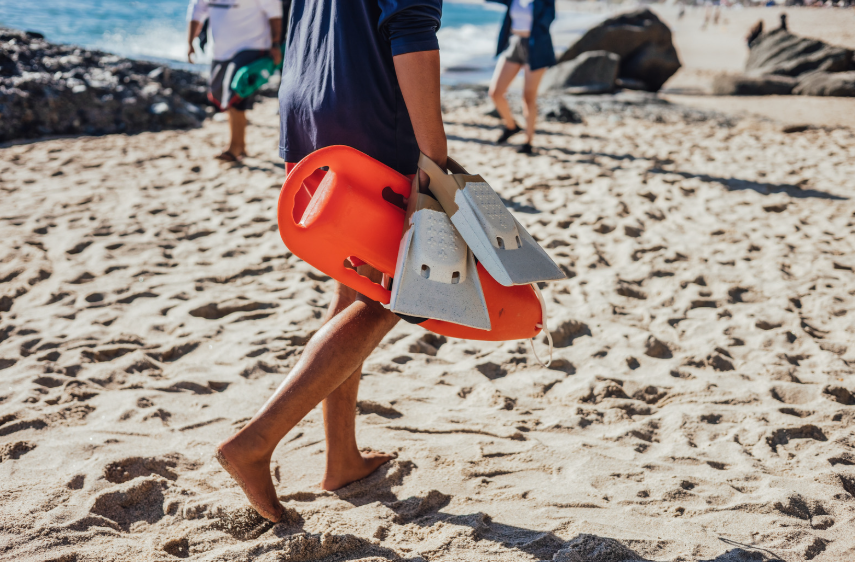This Heart Health Awareness Month in Australia, we’re taking a moment to highlight an important but often overlooked part of recovery—what happens after surgery. While medical intervention is a critical first step, the journey doesn’t stop there. Many people face ongoing fatigue, pain, and strength loss, making it difficult to return to work, re-engage in daily activities, or resume the things they love.
At Specialised Health, we see this firsthand in our return to work (RTW) programs, where clients are working to regain both their independence and their ability to participate fully in life. One such client is Richard (name changed for privacy), whose story is a reminder that rehabilitation isn’t just about healing—it’s about rebuilding function, confidence, and self-sufficiency.
A Tough Diagnosis: The Rollercoaster of Recovery
Richard was diagnosed with severe mitral valve prolapse, a condition where the valve between the left atrium and left ventricle of the heart doesn’t close properly. This can lead to fatigue, breathlessness, and reduced circulation, making even routine tasks exhausting.
He managed to avoid open-heart surgery and opted for a minimally invasive procedure, but his recovery was far from over. When Richard was referred to Specialised Health, his biggest challenge was fully reentering the workforce. As an accountant, he needed to sit or stand at his desk for long hours, but frequent breaks due to fatigue and discomfort made this difficult. His energy levels were unpredictable, and postural fatigue left him feeling drained well before the day was over.
Additionally, Richard had an important role in Surf Lifesaving, a position he had held for years. Beyond being physically demanding, this role was a meaningful part of his identity, connecting him to his community and supporting his mental well-being. But pain, muscle weakness, and reduced endurance made swimming, paddling, and lifesaving tasks feel impossible.
Richard needed a targeted work conditioning plan that would help him regain control over his workday while also rebuilding the strength and endurance for his lifesaving role.
The Program: A Tailored Approach to Function & Recovery
Our Exercise Physiologist, Leanne, designed a structured plan that balanced work demands, pain management, and strength-building while keeping his lifesaving role front of mind as a motivating factor for long-term progress.
Pain & Fatigue Management – A combination of stretching, postural exercises, progressive resistance training, and pacing strategies to minimise discomfort and sustain energy levels throughout long workdays.
Strength & Endurance for Work & Life – Core and upper body conditioning to improve desk posture, reduce strain, and rebuild functional strength for lifesaving tasks like paddling, lifting, and ocean rescues.
Cardiovascular Fitness & Load Management – A progressive return-to-run program and pacing strategies using Garmin’s Body Battery to balance energy output, prevent over-training, and support both work performance and lifesaving duties.
A Hidden Barrier
Midway through his RTW program, Leanne noticed that Richard’s post-exercise pain wasn’t improving as expected. Recognising that something wasn’t right, she investigated further and suspected Post-Thoracotomy Pain Syndrome (PTPS)—a nerve-related condition causing persistent discomfort.
This led her to adjust his training load and recovery strategies, which helped to minimise flare-ups while keeping him progressing, ensuring his recovery was effective rather than just endured.

The Results: A Full Return to Work & Life
At the end of his program, Richard shared that returning to full-time work while also reclaiming his place in the ocean felt like getting his life back. After months of uncertainty, he not only rebuilt his strength but also regained the confidence and independence to keep progressing on his own. While some challenges remained, he finally felt in control of his recovery—and his future.
Beyond his glowing feedback – he also achieved some impressive outcome measures!
SF-36 Scores:
- 23% improvement in physical function
- 28% improvement in pain management
Work Capacity:
- Capacity to return to full-time 10-hour workdays, with pacing strategies provided
Life & Sport:
- Successfully passed his surf lifesaving proficiency test, completing:
- Ocean swim
- Board and tube rescue
- IRB operation
- Surfed for the first time in 9 months! Regaining confidence in the water
Why Heart Health Awareness Matters
Richard’s story is a powerful reminder that heart surgery is only the beginning of recovery—what happens afterward is just as important. Fatigue, pain, and strength loss don’t have to be permanent barriers, and a structured RTW plan can help individuals regain function, rebuild confidence, and successfully return to work.
If you have a customer who is navigating post-surgical recovery, ongoing pain, or fatigue-related conditions, Exercise Physiology can help.
Get in touch with Specialised Health today to see how we can support their journey back to function.
Author: Tessa Nielsen



